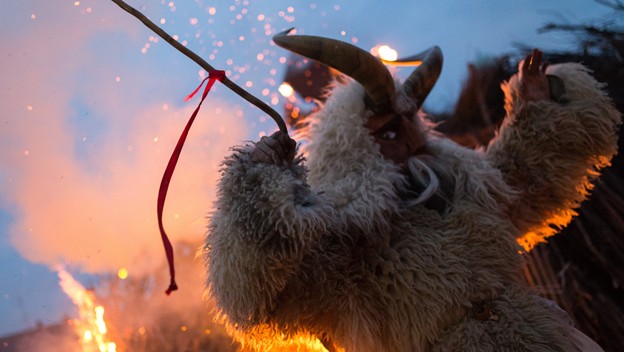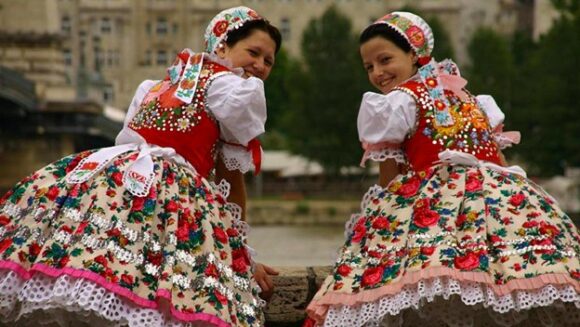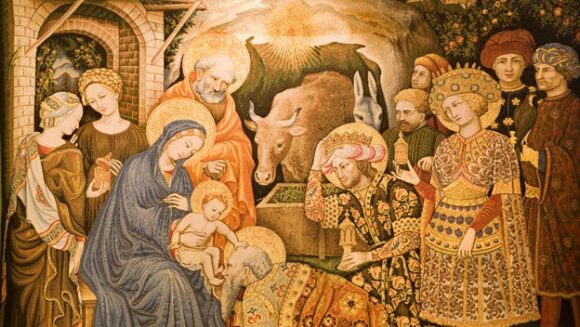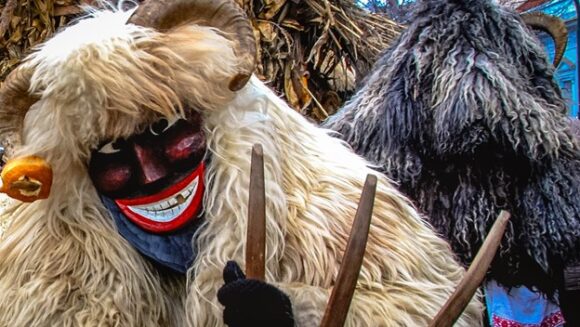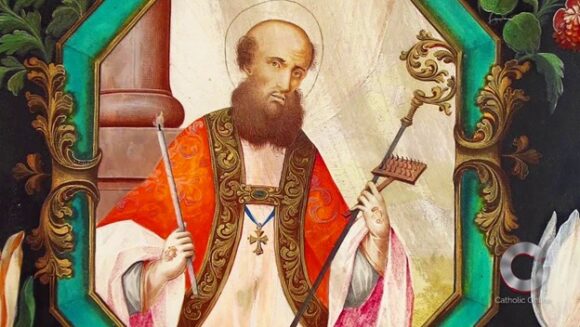While usually Christmas steals the spotlight during the festive season, Hungarians have various diverse ways of celebrating winter, including some amusing and unexpected folk customs and traditions. Have a look at some of the quirkiest Hungarian winter traditions that are guaranteed to bring a little smile to your face during these cold, gloomy days.
Hejtegetés
This Hungarian winter tradition is mostly practiced in Csángo Land and is meant to ensure a fruitful harvest and an abundance of grains in the next season. The young Csángo men, a Hungarian ethnic group living in the Romanian region of Moldavia, visit the houses of unmarried girls and sing traditional chants accompanied by bells, flute and drum. The interesting part of this practice is that the lads imitate the sound of a bull with the help of jug horns while retelling the story of the wheat from the day the seeds are planted until the moment when the fresh loaf comes out of the oven.
Source: canva.com
Little Saints’ Day
Little Saints’ Day falls on 28 December and it is associated with a rather bizarre folk custom. There are two versions of it. The more widespread practice is related to young men, often herdsmen, who visit the homes of young girls, women, and children and birch them with a rod made of twigs. According to the other version, young boys are sent by their parents to the neighbors to ask for mustard seeds. The unwitting boys also receive some pats with birch on their rare ends. However, they are rewarded afterward with a handful of hazelnuts, walnuts, or a couple of coins.
Source: canva.com
New Year customs
People in the old times would often entertain themselves with future telling while being locked up between the four walls during the frosty season. An example of such practice in Hungarian folk culture is the so-called onion calendar. On 31 December, the villagers would sprinkle salt on 12 garlic cloves and the ones that became damp indicated the months of the year with the most precipitation. Young, unmarried girls also had their ways to steal some laughter on the last day of the year. They would make dumplings with little notes of male names tucked inside them, and the ones that would reach the surface first in the pot would reveal the names of their future husbands.
Source: canva.com
Epiphany
One of the most popular Hungarian epiphany customs includes the marking of the door lintels with the magi’s blessing (the three wise men or the three kings that visited Baby Jesus after his birth). The priests of the villages go from door to door giving their blessing to the families and drawing the initials of the three kings on the doors. In exchange for that, they usually receive some donation in the form of money or homecooked pastries.
Source: canva.com
Carnival
Hungarian carnivals are the ultimate highlights of the winter season. These spectacular events are visited by people from all corners of the world. The most famous Hungarian carnival tradition is Busó walking and is originated from the village of Mohács, in southern Hungary. The celebration features scary-looking men wearing wooden masks and woolly cloaks who march or ride horse-drawn fantasy vehicles through the town and burn coffins that symbolise the winter season. The festivities last six days and involve folk music, dancing, parades, masquerading and making lots of noise with various unusual objects.
Source: canva.com
Balázs-walking
Another unique Hungarian winter tradition is called the march of Balázs (3 February). On this day, school teachers walk around the villages with their pupils singing good wishes to the residents and collecting donations for the school. These marches are meant to honor Bishop Balázs (Saint Blaise), who was often portrayed with a pig head back in the day and was known for healing people who suffered from tonsillitis. In some houses, people roast apple peels and bless them by murmuring some religious verses before feeding them to the ill.
Source: wikipedia.com
– Eleonora Jobst –
Main picture: canva.com









